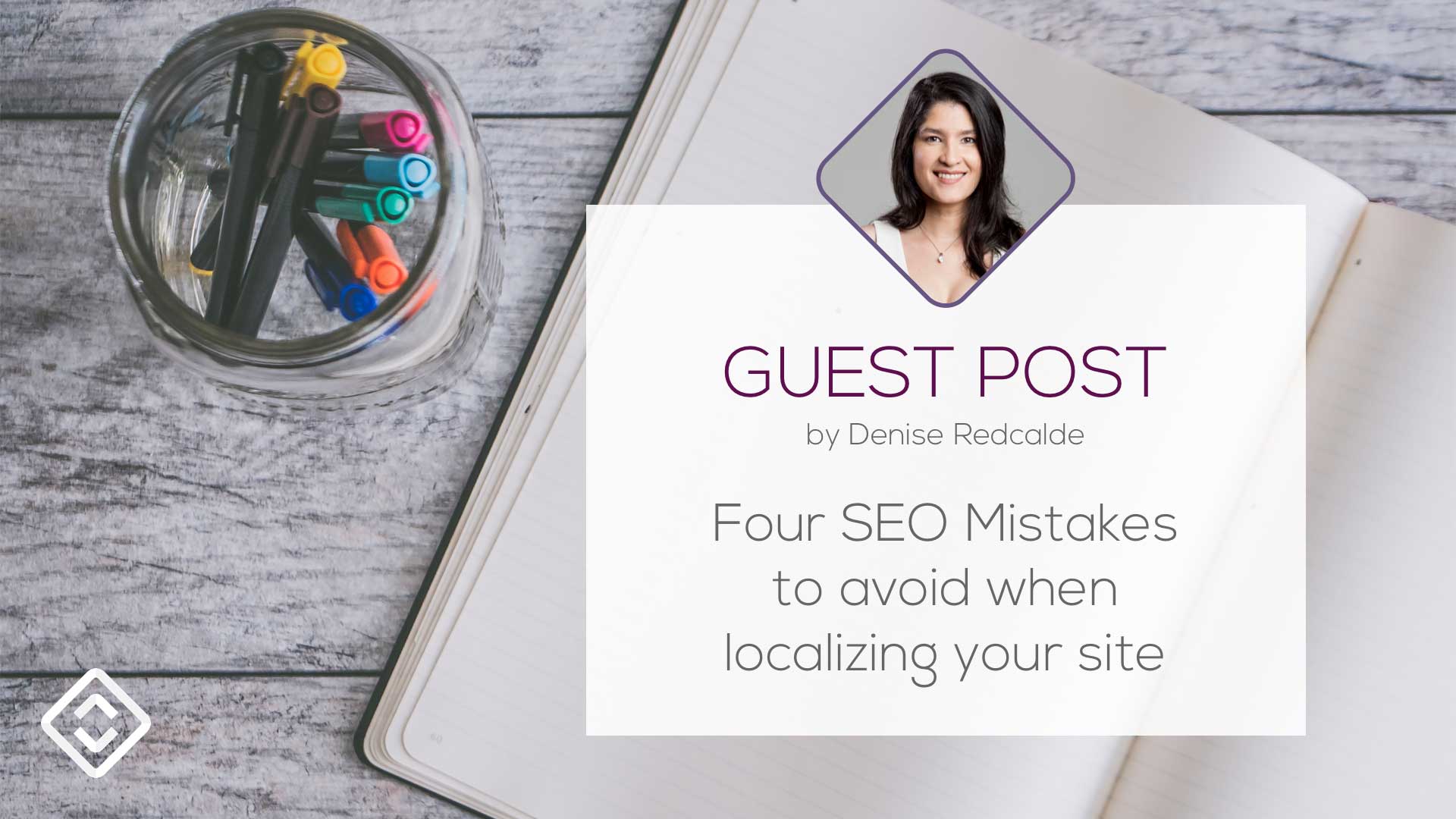
So you think you know all there is to know about SEO? Are you sure? How about multilingual SEO? Multilingual SEO uses strategies that are vastly different from those usually applied to traditional SEO in English. Certainly, some practices are the same, such as embedding SEO keywords in metadata and headers. However, new understandings need to be applied when optimizing your site for different countries around the world.
Because multilingual SEO goes beyond just translating a few keywords, we’ve identified four of the most common mistakes to avoid when localizing your digital properties:
Mistake 1: Offering low-quality content on your translated websites
As you well may know, Google heavily penalizes website owners who keyword-stuff their website content.
Google’s recent algorithm updates were all designed to promote high-quality content on the internet while punishing the website owners of poor quality content. This means you will have to ensure the content pages of each localized version of your site features attractive, high-quality content.
Ensuring correct grammar and syntax along with a high translation quality are vital elements to featuring good, valuable content on your website. Clumsily translated copy that doesn’t read smoothly can make your website a target of Google penalties.
Other ways to boost the value of your translated content include incorporating localized videos into each website version, as well as featuring user-generated content such as social media feeds and reviews so that your site seems locally based.
Because you are out to create value for your customers, you have to always ensure you are providing a quality content experience for your customers on each localized site.
Mistake 2: Not featuring unique website content
It may be tempting to copy content from other content-rich sites and place them on your localized digital properties. However, investing in professional translation services to accurately translate your original content in English would be better. Only native, local speakers know how to translate your content with style and idiomatic expressions so that your target foreign audience resonates with the text. Only professionals understand how best to approach your target foreign market, as well as appeal to them about your products and services.
Communicating branding accurately can only be done with accurately translated content that is original. Don’t be a copycat. Be sure to stick to original content in all localized versions of your site.
Mistake 3: Mirror translating SEO keywords
Don’t fall for the trap of doing SEO keyword research in English, then translating those keywords word-for-word for your localized sites. When you don’t have professional localization services to undertake proper keyword research for your localized site, you risk using mirror-translated words that don’t translate well to foreign audiences.
At it’s most fundamental, SEO keywords are all about being top-of-mind in the heads of your potential customers when they are about to initiate a search on Google. When you use mirror-translated words that aren’t easily recognized by foreigners, you spoil your chances of having them easily find you on Google.
Recognize that web surfers in different countries may use different keywords when searching for products and services on Google. For example, British people refer to large product carrier vehicles as “lorries” rather than “trucks” in the U.S.A. Or “lift” rather than “elevator”.
Because a lot of thought and experience is required when researching SEO keywords for your localized site, you may need to hire a professional translation services firm to handle your website localization.
Mistake 4: Not facilitating direct traffic to your localized site
The whole point of multilingual SEO is to make it simple for potential customers to find your site. Using a country code top-level domain (ccTLD) helps make this possible. A ccTLD is the domain suffix that identifies a website with a geographical region — such as .de or .uk.
Your company should always acquire country-specific domains for every nation they aim to target, before or during the localization stage. This is perhaps the most basic first step towards optimizing a digital property for a foreign audience.
Because these country-specific domains are universally recognized by the people of the relevant country, you automatically draw users to your site. You also help search engines better rank these sites for foreign audiences.
These four best practices touch on the basic steps you need to undertake a smooth localization process for your website.

Denise Recalde
Senior Content Writer
Denise Recalde is a Senior Content Writer at Day Translations, a human translation services company. A seasoned writer and editor with eleven years of experience under her belt, she is a bonafide wordsmith who loves playing with the written word creatively and always takes care to lend a certain hue of snap and color to her drafts. Always one to rise up to challenges, she has traveled to 14 countries and has worked on a smorgasbord of writing projects that spanned several industries, from finance to health to beauty and fashion.

Thanks for the great tips! I’m new to online marketing, and this is really helpful! Since getting started, I’ve been bombarded by “spin writers” and such to create a TON of content quickly, but you seem to say that these search engines have become sophisticated enough to determine when your content is crap. Am I understanding that right?
That is indeed so. Glad you liked this guest post.